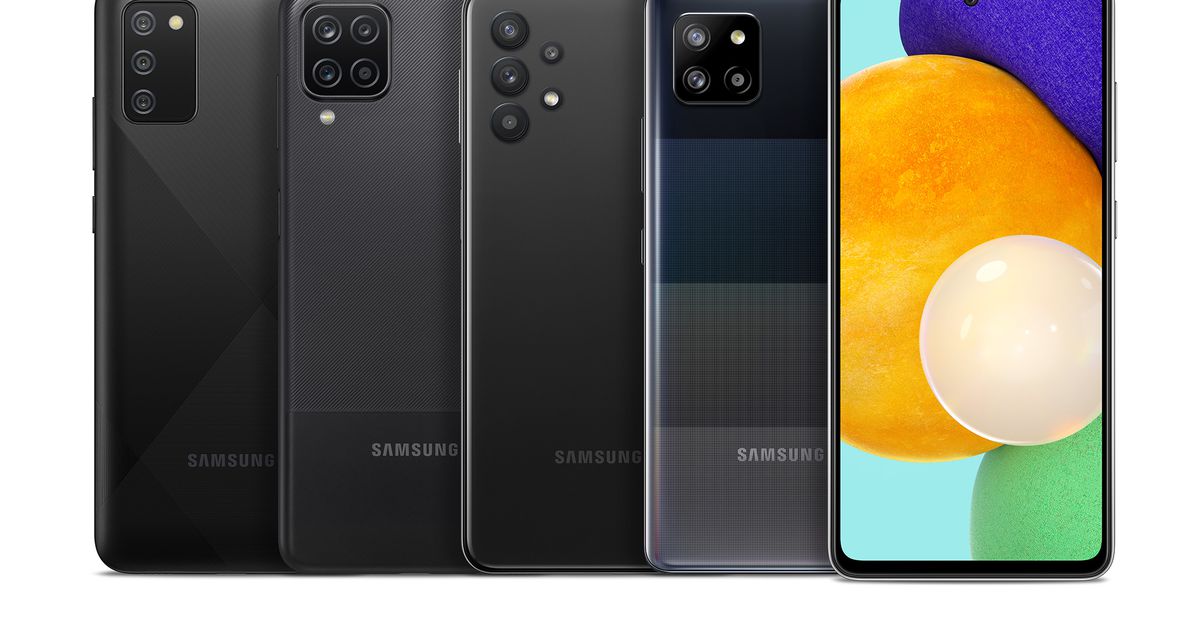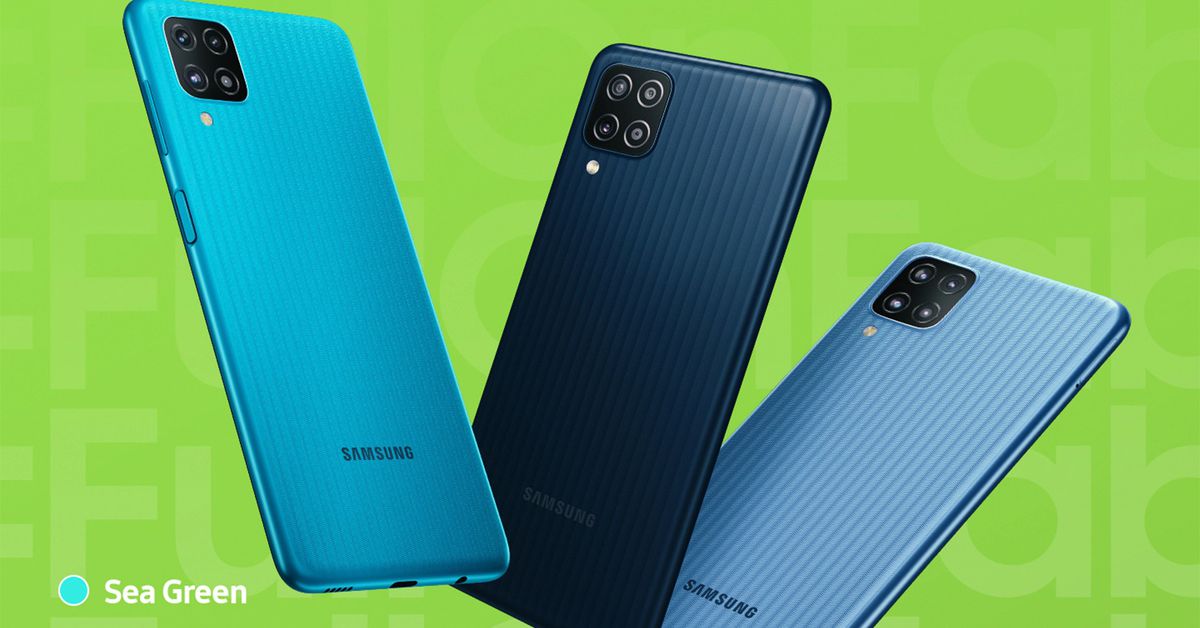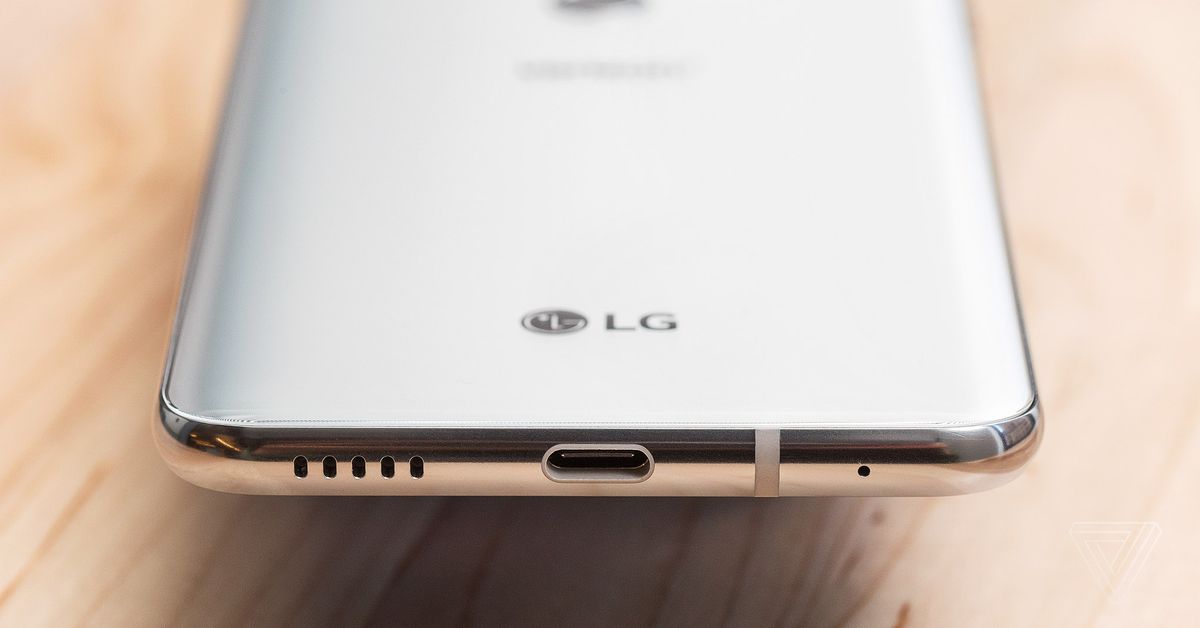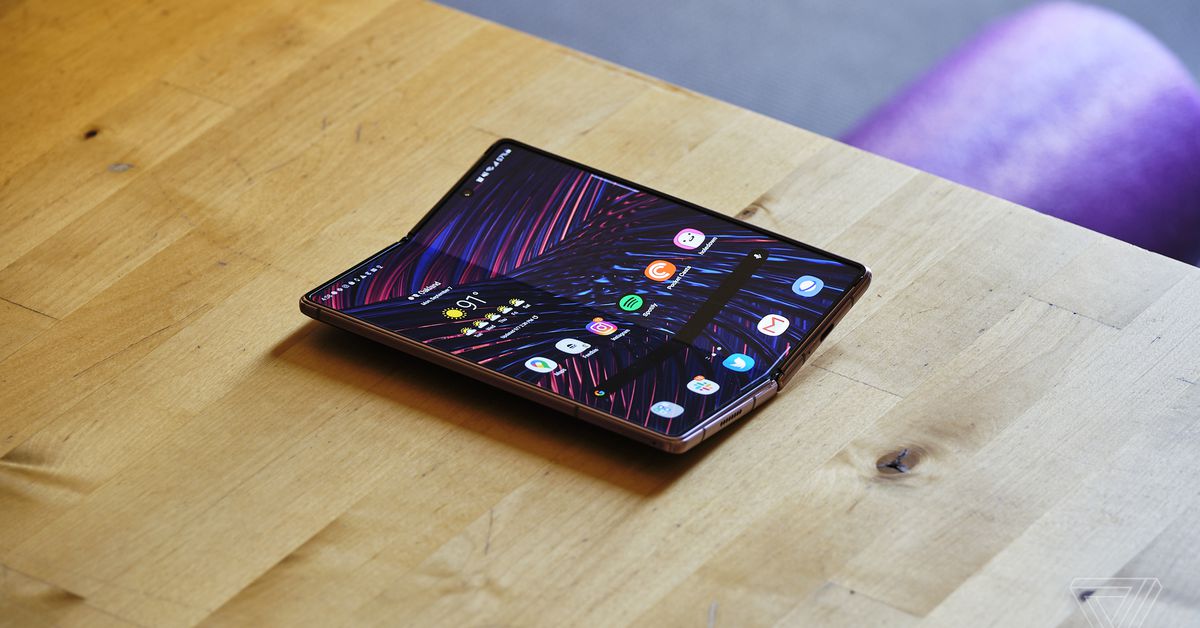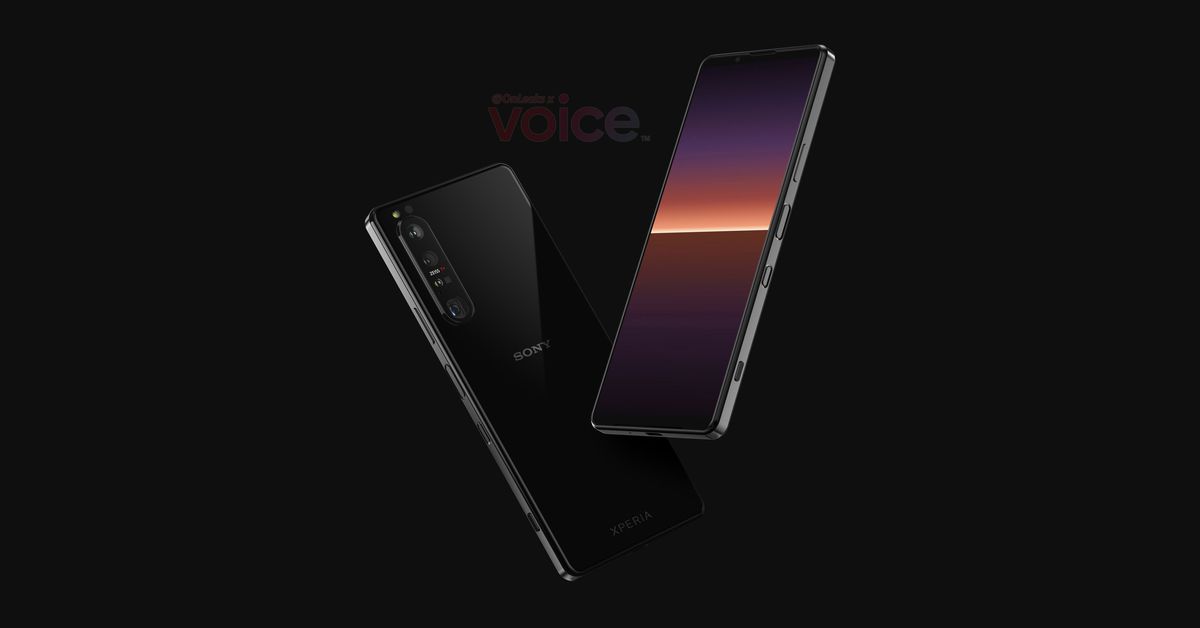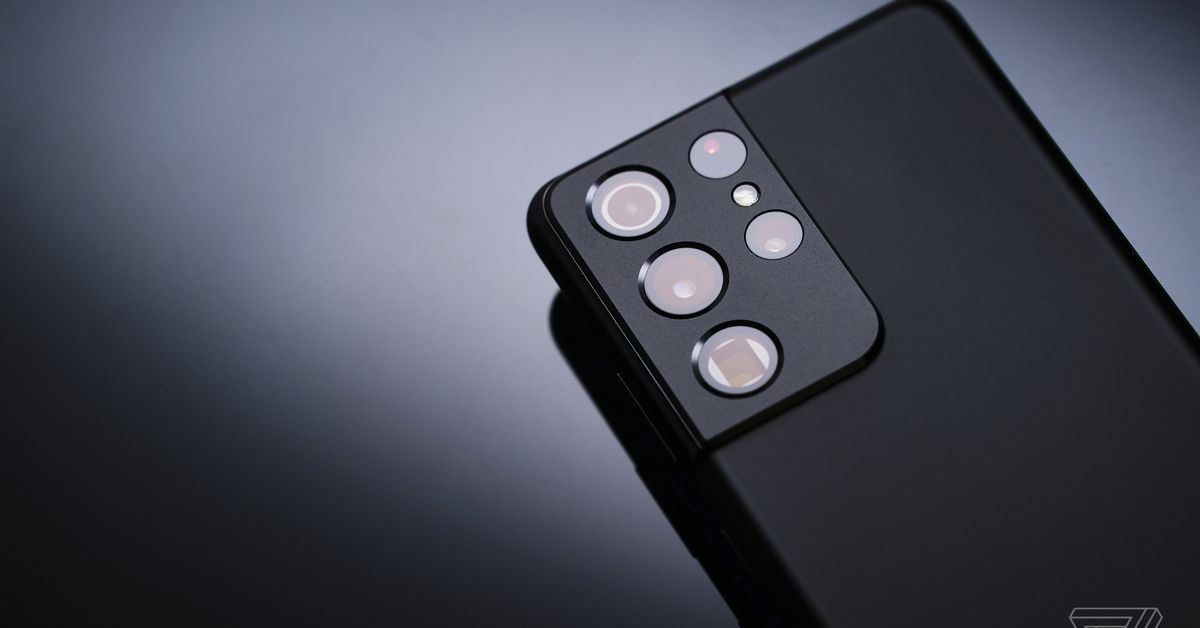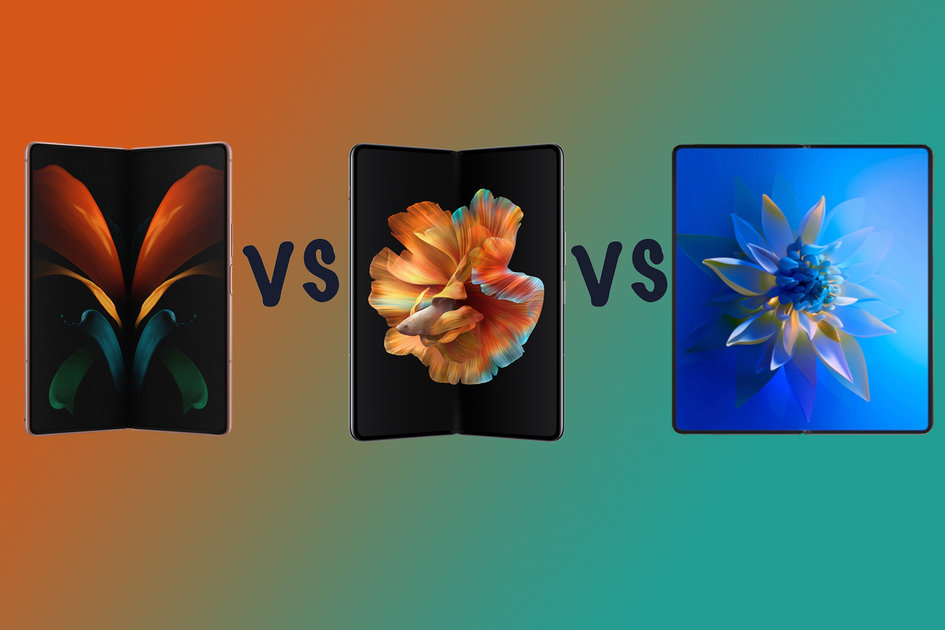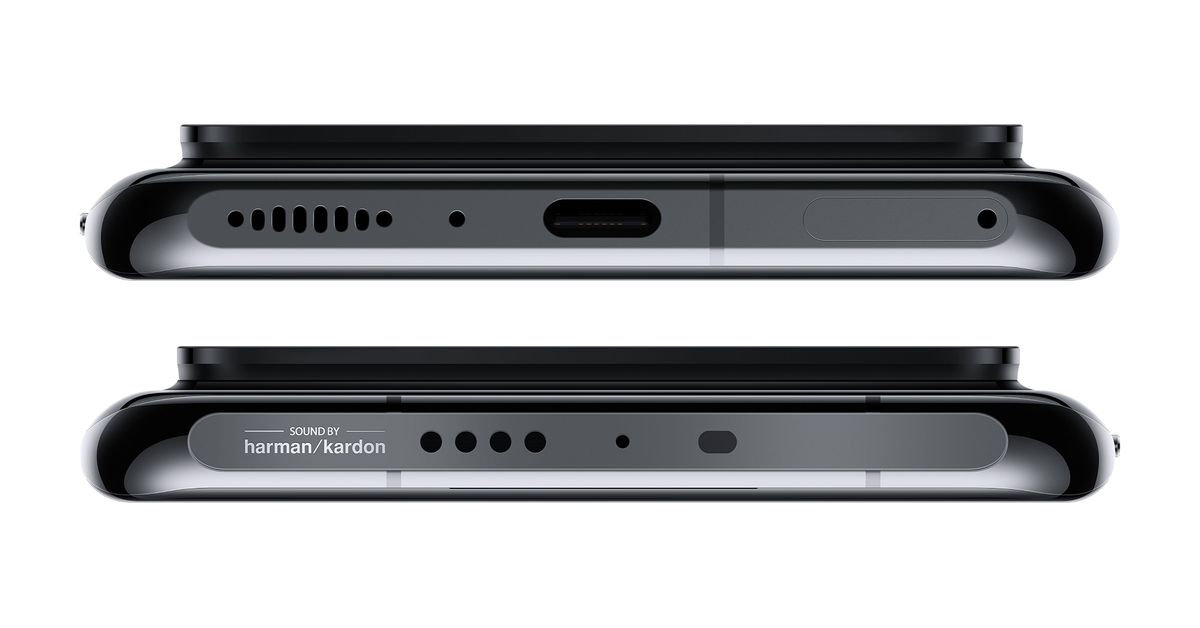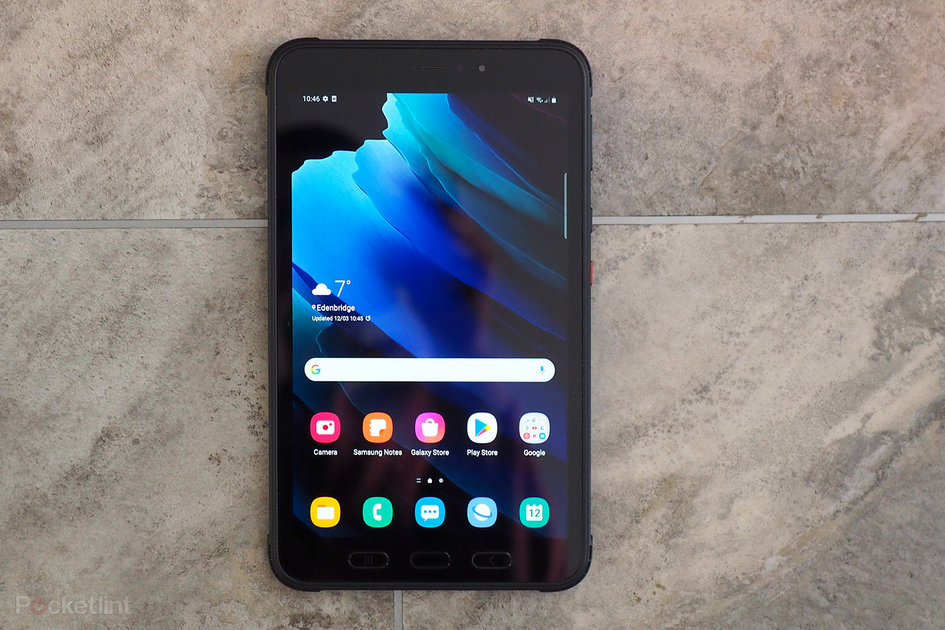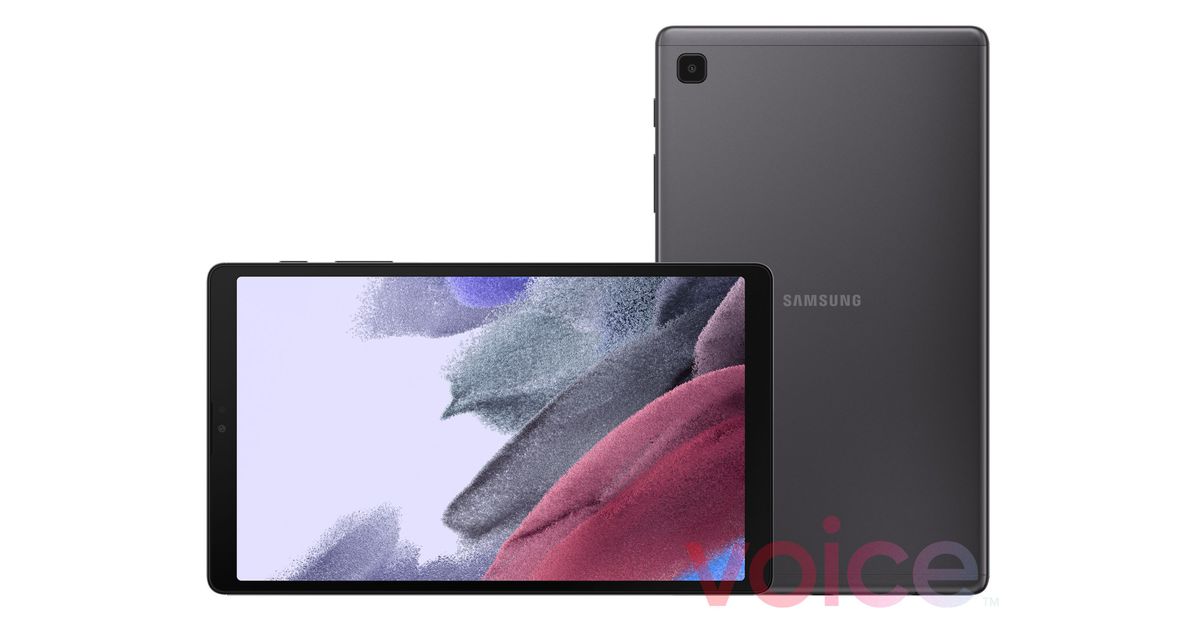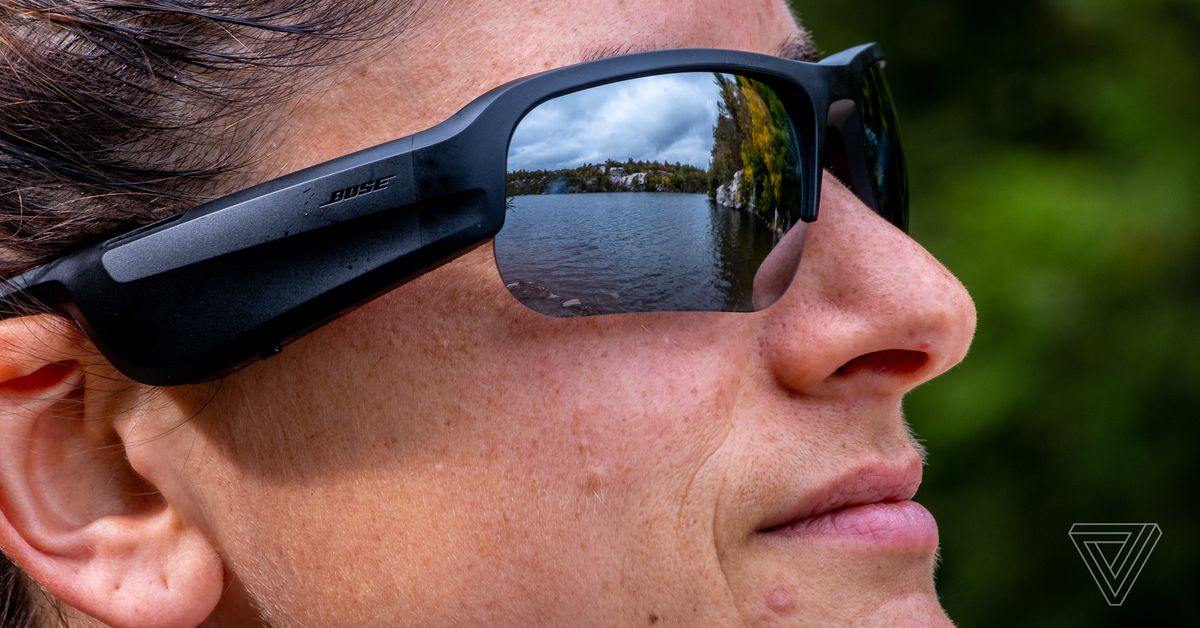(Pocket-lint) – Huawei’s second generation of its foldable smartphone comes in the form of the Mate X2, while Xiaomi’s foldable phone is called the Mi Mix Fold.
Both follow a similar design to the Samsung Galaxy Z Fold series after Huawei changed the format of the folding device from its predecessor – the Mate X and Xs- moving from a foldable display on the outside, to an inward folding display.
If you’re in the market for a vertically folding smartphone, here is how the Xiaomi Mi Mix Fold, Huawei Mate X2 and the Samsung Galaxy Z Fold 2 compare.
Design
- Mi Mix Fold: 173.3 x 133.4 x 7.6mm unfolded / 173.3 x 69.8mm x 17.2mm folded / 317g (Black) 332g (ceramic)
- Mate X2: 161.8 x 145.8 x 4.4-8.2mm unfolded / 161.8 x 74.6 x 13.6-14.7mm folded / 295g
- Z Fold 2: 159.2 x 128.2 x 6.9mm unfolded / 159.2 x 68 x 16.8mm folded / 282g
The Xiaomi Mi Mix Fold has a vertical folding display in a book-style design, like the Huawei Mate X2 and Galaxy Z Fold 2. It comes with a glass or special edition ceramic back and there is a prominent camera housing in the top left corner. There’s a metal frame, large display and a single punch hole camera in the top right corner when folded.
When unfolded, the Mi Mix Fold has an 8.01-inch display and a precision based hinge. There is a small gap when folded though, like the Samsung Galaxy Z Fold 2. It comes in Black or Special Edition Ceramic finishes.
The Huawei Mate X2 meanwhile, also features a vertical folding display. There’s a glass rear with a prominent rectangular camera housing in the top left corner, a metal frame and a full display with dual cut-out cameras on the front when folded.
When unfolded, the Mate X2 has a large 8-inch screen. The hinge is multi-dimensional, creating a water dropped-shaped cavity for the display when the phone is folded, allowing for no gap at all when shut, resulting in a different design to the Mi Mix Fold and Galaxy Z Fold 2. There’s also a wedge-like design that is just 4.4mm at the slimmest point. It comes in White, Black, Crystal Blue and Crystal Pink colours.
The Samsung Galaxy Z Fold 2 has a similar form to the Huawei Mate X2 and Xiaomi Mi Mix Fold in that it offers a vertical fold in a book-style design. It too has a glass rear, with a rectangular camera housing in the top left corner, as well as a metal frame. Like the Mi Mix Fold, it has a single, punch hole camera on the front when folded but it is centralised rather than positioned to the right.
When unfolded, the Galaxy Z Fold 2 has a slightly smaller 7.6-inch display than the Huawei Mate X2 and Xiaomi Mi Mix Fold. It’s hinge allows for multiple viewing angles but there is a slight gap at the fold of the device when folded. It comes in Mystic Bronze and Mystic Black colours.
Display
- Mi Mix Fold: 8.01-inch unfolded, 6.5-inch folded, OLED, 90Hz refresh rate
- Mate X2: 8-inch unfolded, 6.45-inch folded, 8-inch unfolded, OLED, 90Hz refresh rate
- Z Fold 2: 7.6-inch unfolded, 6.23-inch folded, OLED, 120Hz refresh rate
The Xiaomi Mi Mix Fold has a 6.5-inch AMOLED display with a resolution of 2520 x 840 resolution and a pixel density of 409ppi on the front when folded. It has a 27:9 screen ratio and a 90Hz refresh rate. There’s a punch hole camera in the top right, and the bezels are slightly larger than the Huawei and Samsung alternatives.
When unfolded, the Mi Mix Fold has a 8.01-inch display WQHD+ resolution, 1 billion colours and a 4:3 aspect ratio. It has a 60Hz refresh rate.
The Huawei Mate X2 has a 6.45-inch OLED display with resolution of 2700 x 1160 and a pixel density of 456ppi on the front when folded, making it fractionally smaller than the Mi Mix Fold, though with slimmer bezels. It features a 21:9 aspect ratio and a 90Hz refresh rate. As mentioned above, the X2 has dual punch-hole front cameras in the top left of the display.
When unfolded, the Mate X2 has an 8-inch OLED display with a 2480 x 2200 resolution, which results in a pixel density of 413ppi. The unfolded display has a ratio of 8:7.1. It too has a 90Hz refresh rate.
The Samsung Galaxy Z Fold 2 has a 6.23-inch external display, making it slightly smaller than the Mate X2 and Mi Mix Fold. It too is an AMOLED panel and it offers a resolution of 2260 x 816 pixels and an aspect ratio of 25:9.
When unfolded, the Galaxy Z Fold 2 has an internal display of 7.6-inches – which is the smallest of the three devices being compared here. It’s Dynamic AMOLED and it has a 2208 x 1768 pixel resolution, resulting in a pixel density of 372ppi. It also has a 120Hz refresh rate and supports HDR10+.
Cameras
- Mi Mix Fold: Triple rear camera (108MP + Liquid Lens 8MP + 13MP), 20MP front
- Mate X2: Quad rear camera (50MP+16MP+12MP+8MP), 16MP front
- Z Fold 2: Triple rear (12MP+12MP+12MP), 10MP front
The Xiaomi Mi Mix Fold has three lenses on its rear, with a 108-megapixel main sensor with 2.1µm pixels and a 7P lens, along with a 13-megapixel ultra wide angle lens with a 123-degree field of view.
There is also an 8-megapixel liquid lens on the rear that uses the principle of human eye bionics and a special chip created by Xiaomi to change the radius of curvature of the spherical surface. It allows the one lens to cover two functions, enabling 3x optical zoom, up to 30x digital and a minimum focus distance of 3cm. The front camera on the Mix Mix Fold is a 20-megapixel snapper.
The Huawei Mate X2 has a quad camera on the rear, which features Leica technology, like Huawei’s other flagship smartphones. The camera setup includes a 50-megapixel main sensor, 16-megapixel ultra-wide angle sensor, 12-megapixel telephoto sensor, and an 8-megapixel SuperZoom sensor.
The main sensor has a f/1.9 aperture and OIS, the Ultra-wide sensor has a f/2.2 aperture, the telephoto sensor has a f/2.4 aperture and OIS with 3x optical zoom, while the SuperZoom sensor has a f/4.4 aperture, OIS and 10x optical zoom. The front camera is 16-megapixels wide angle with a f/2.2 aperture.
The Samsung Galaxy Z Fold 2 has a triple rear camera, comprised of a 12-megapixel main camera, 12-megapixel telephoto sensor and 12-megapixel Ultra-wide sensor.
The main camera has an f/1.6 aperture, dual pixel phase-detection autofocus and OIS, the telephoto lens has an aperture of f/2.4 and OIS and the ultra-wide sensor has an aperture of f/2.2. There is also a 10-megapixel front camera.
Hardware and specs
- Mi Mix Fold: Qualcomm Snapdragon 888, 5G, 12/16GB RAM, 256/512GB storage, 5020mAh
- Mate X2: Kirin 9000, 5G, 8GB RAM, 256/512GB storage, 4500mAh
- Z Fold 2: Qualcomm Snapdragon 865+, 5G, 12GB RAM, 256/512GB storage, 4500mAh
The Xiaomi Mi Mix Fold runs on Qualcomm’s Snapdragon 888 chipset. It’s a 5G handset and it comes with 12GB of RAM and either 256GB or 512GB of storage. The Special Edition Ceramic model has 16GB of RAM and 512GB of storage though.
There’s a 5020mAh battery under its hood that supports Xiaomi’s 67W fast charging. The software is MIUI 12, based on Android 10 and there features like a one click option to close down things like GPS for security, as well as a Desktop Mode with a three-finger swipe.
The Huawei Mate X2 runs on Huawei’s own 5nm Kirin 9000 platform. It too is a 5G device. It is supported by 8GB of RAM and it comes in 256GB and 512GB storage variants.
It has a 4500mAh battery under the hood that supports Huawei’s 25W SuperCharge. Huawei’s own Harmony OS can be installed over the company’s usual EMUI interface running on top of Android.
The Samsung Galaxy Z Fold 2 runs on Qualcomm’s Snapdragon 865 Plus chipset, supported by 12GB of RAM and it comes in 256GB and 512GB storage options.
There’s a 4500mAh battery running the Fold 2, which supports 25W wired charging, 11W wireless charging and 4.5W reverse wireless charging. It runs Android with Samsung’s One UI over the top and there are some great multi-tasking features that make great use of the screen when unfolded.
Price
- Mi Mix Fold: Equivalent of £1105/$1550, China
- Mate X2: Equivalent of £1985/$2785, China
- Z Fold 2: £1799, $1999
The Xiaomi Mi Mix Fold costs RMB 9999, 10,999 or 12,999, starting at the equivalent of $1550 or £1105. It will be available in China from 15 April.
The Huawei Mate X2 costs RMB 17,999 or 18,999, starting at the equivalent of $2785 or £1985. It is available in China only for now.
The Samsung Galaxy Z Fold 2 costs £1799 in the UK and $1999 in the US.
SQUIRREL_339457
Conclusion
The Xiaomi Mi Mix Fold and Huawei Mate X2 is only available in the Chinese market at the moment but while the Mate X2 is a little more expensive than the Samsung Galaxy Z Fold 2, the M Mix Fold is cheaper.
On a spec-by-spec comparison, these three devices are similar and while the Xiaomi Mi Mix Fold tips the scales in several areas, the other two devices have their fair share of wins too.
The Xiaomi Mi Mix Fold has larger displays both interior and exterior than both the Huawei and Samsung. It also offers the most advanced Qualcomm chipset, the largest battery of the three devices, the fastest wired charging capabilities and it has an interesting camera setup with its liquid lens.
The Mate X2 arguably has a more streamlined design, an extra camera on the rear and a wide-angle front camera. It also has only fractionally smaller displays than the Mi Mix Fold.
The Galaxy Z Fold 2 has more RAM than the Mate X2 but the same as the Mi Mix Fold. It also has a higher refresh rate on the internal display though and it offers a more user-friendly software experience, as well as supporting Google services – the latter of which the Mate X2 does not offer. The Z Fold 2 has less cameras than Huawei but the triple rear camera does offer great results.
The Samsung is more widely available than both the Mate X2 and the Mi Mix Fold so while the Mi Mix 2 and Mate X2 might win on some specification areas, you’ll need to live in China to get your hands on them for now. It’s also worth remembering the Galaxy Z Fold 3 is tipped for a July 2021 launch.
Writing by Britta O’Boyle.
